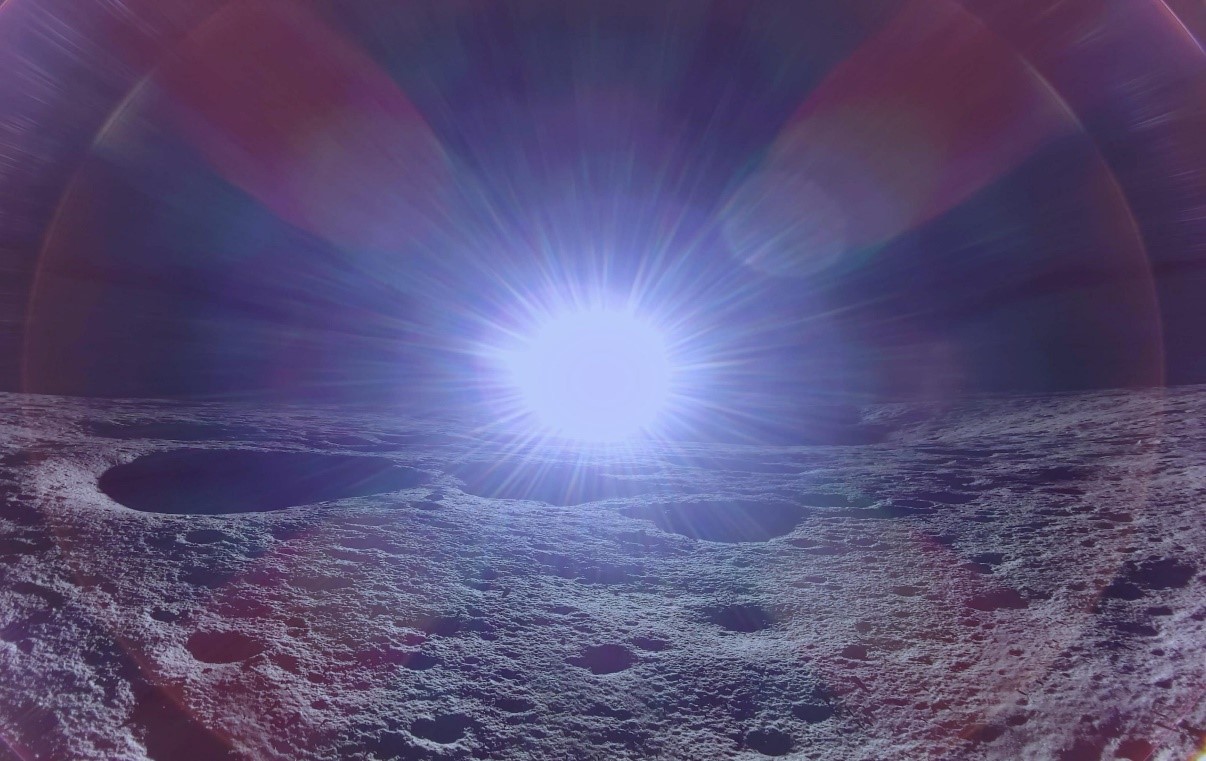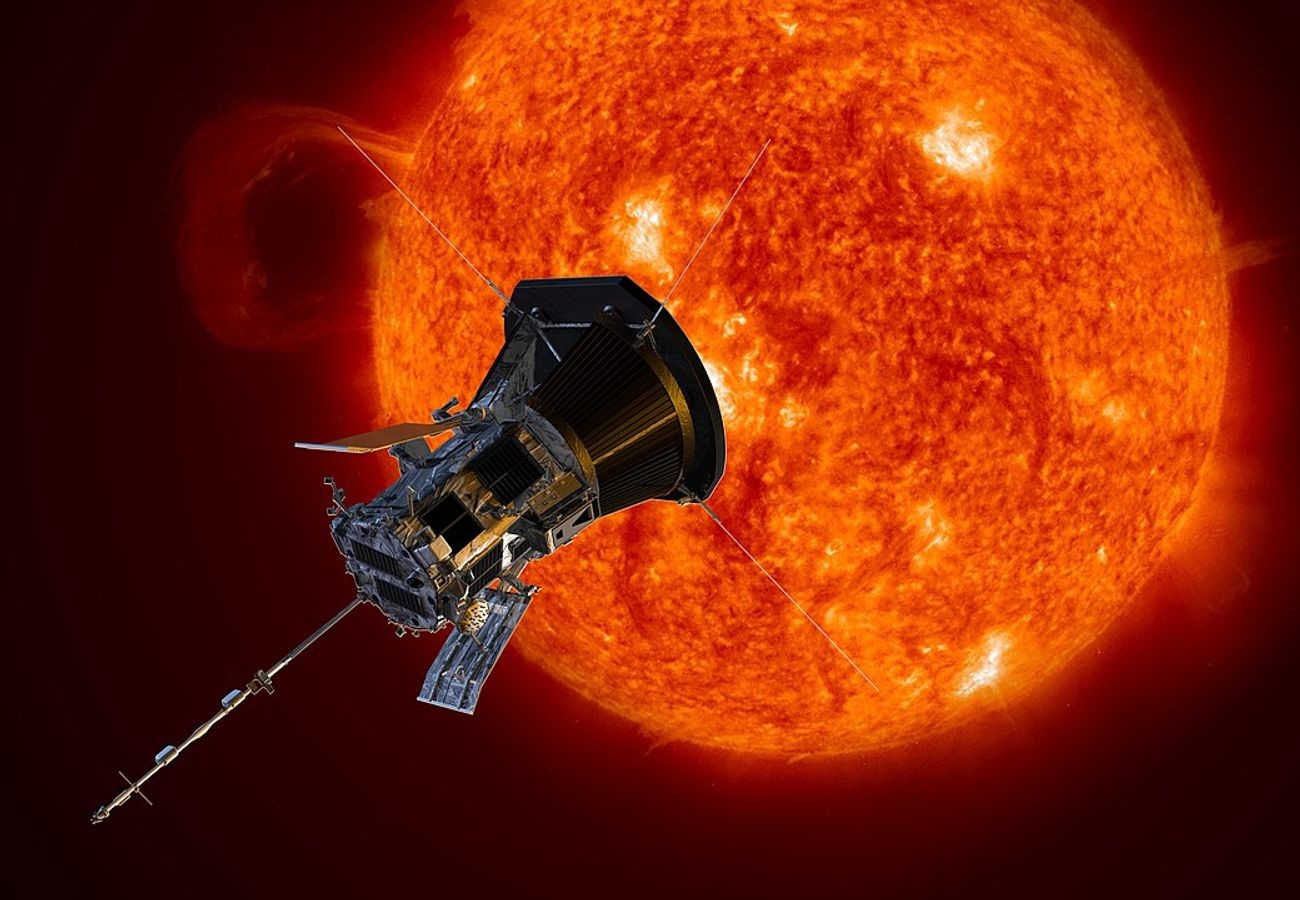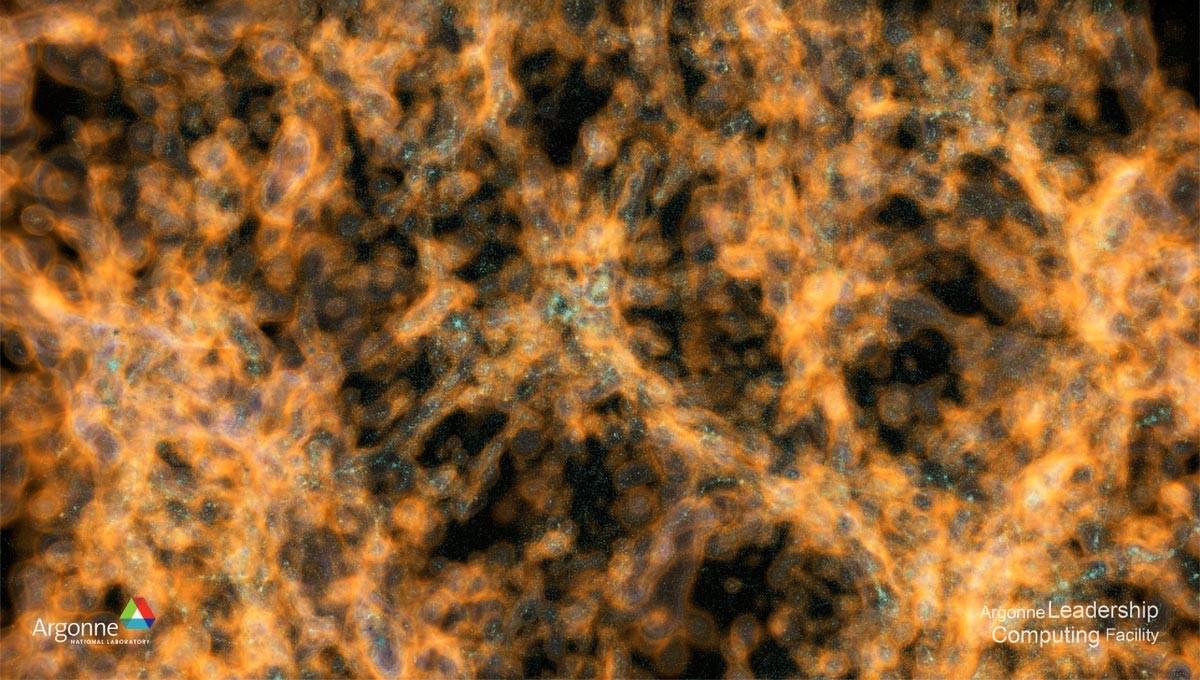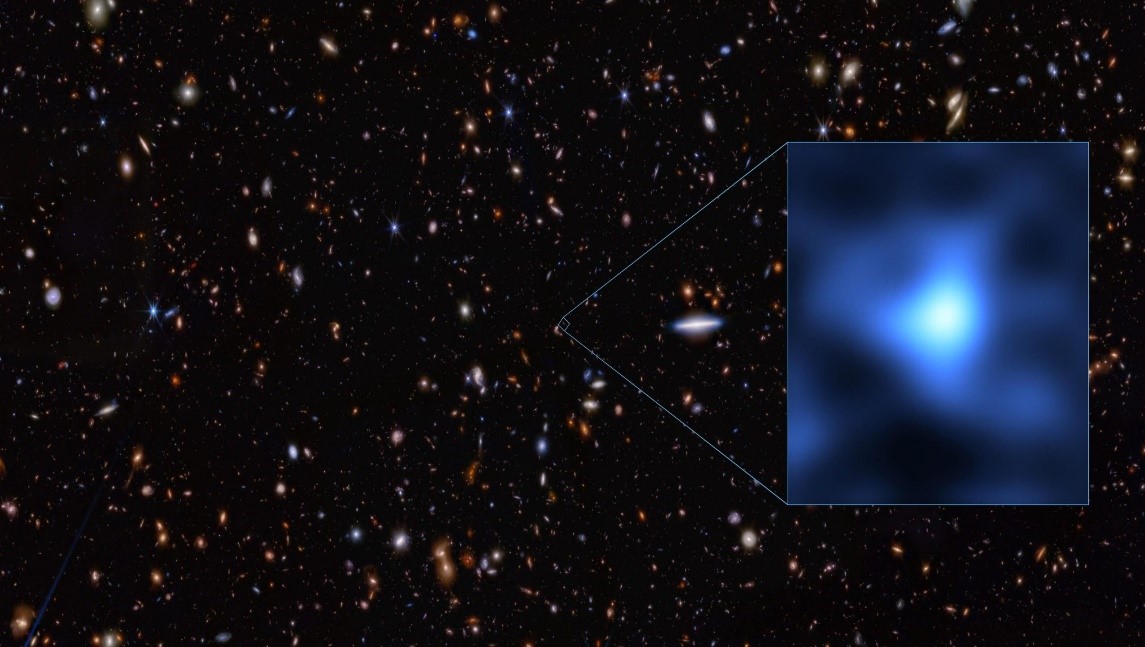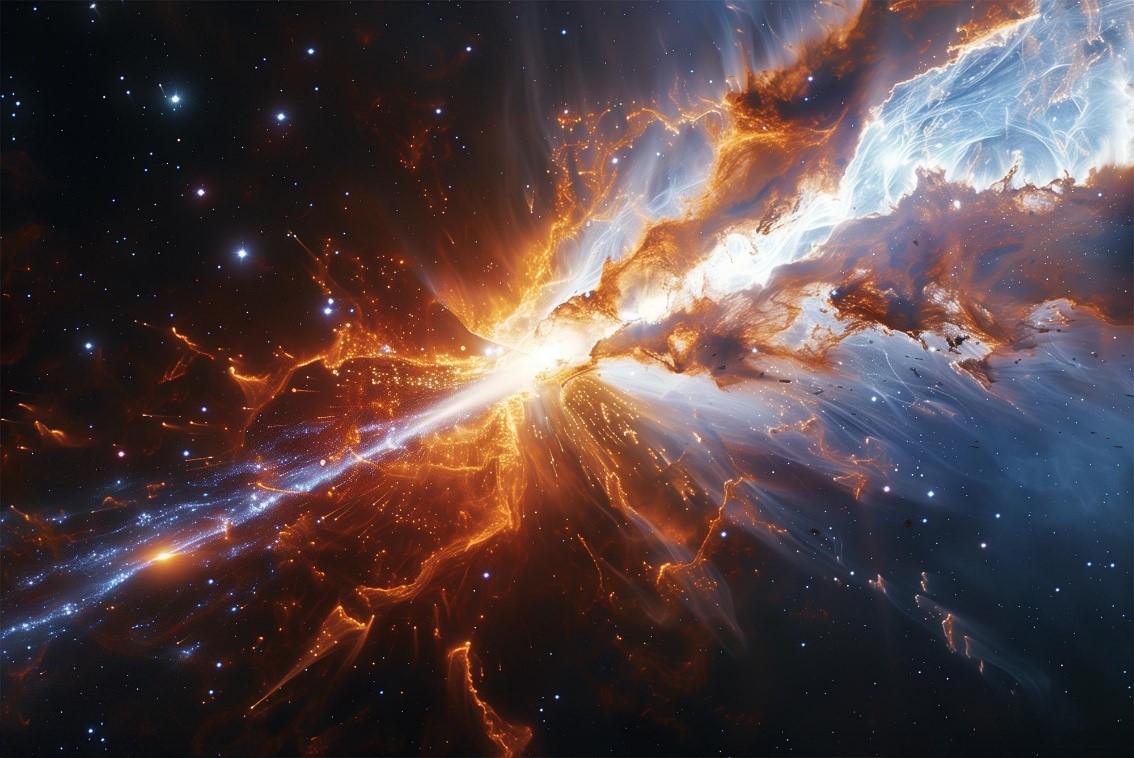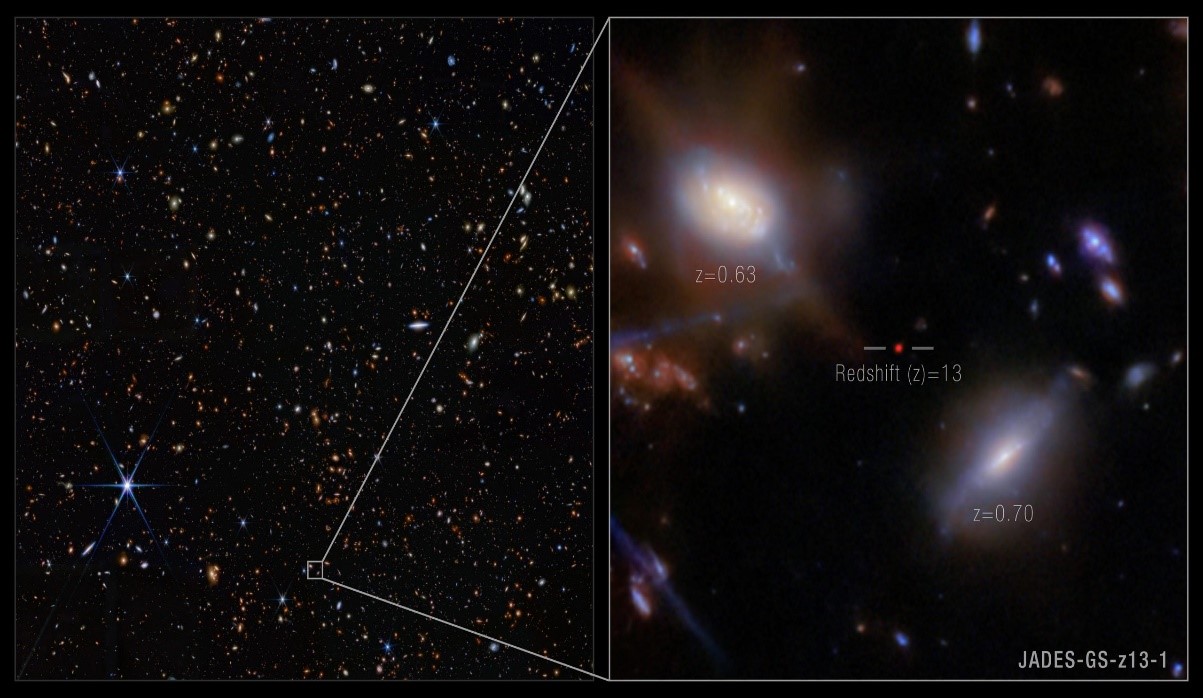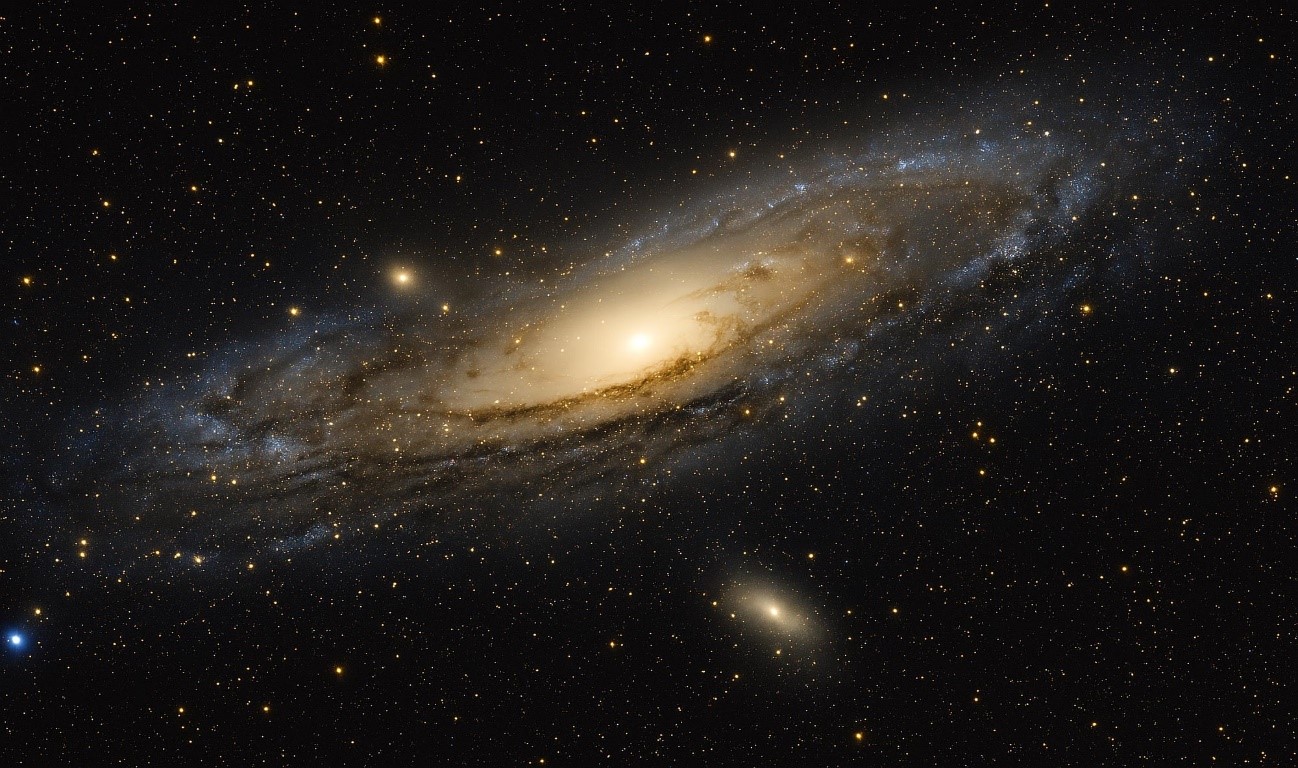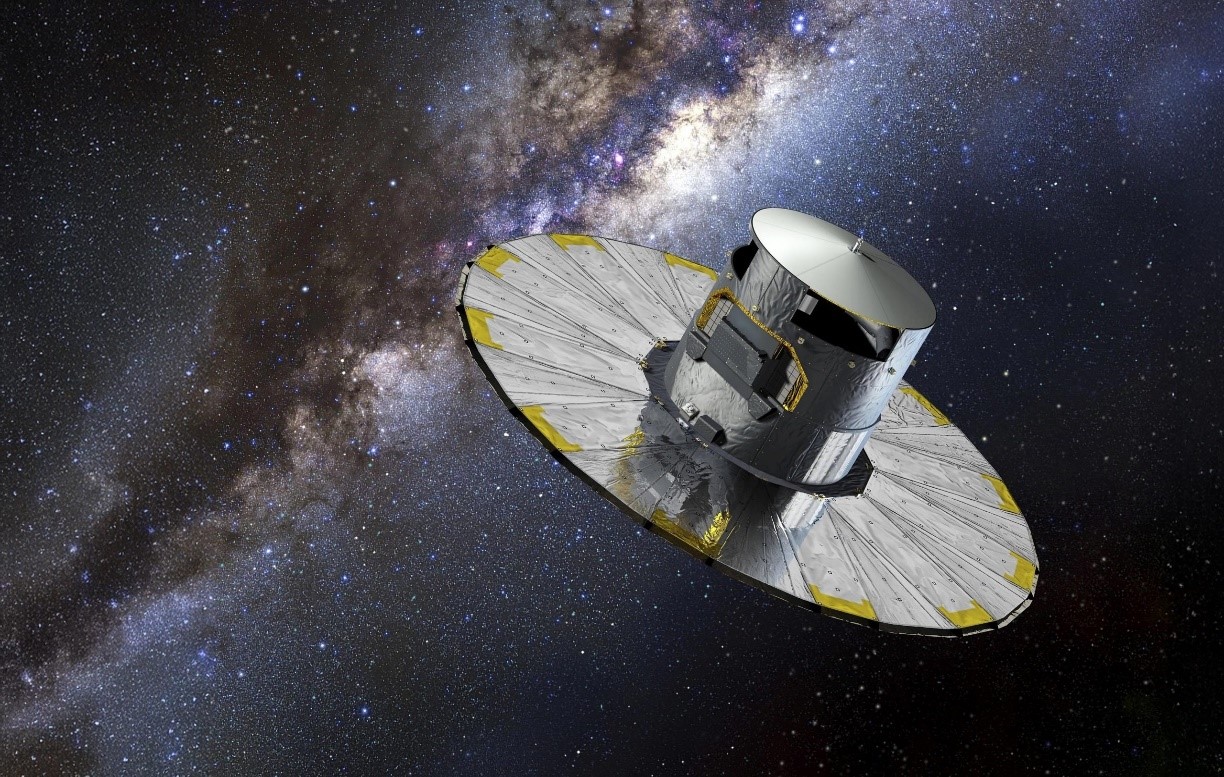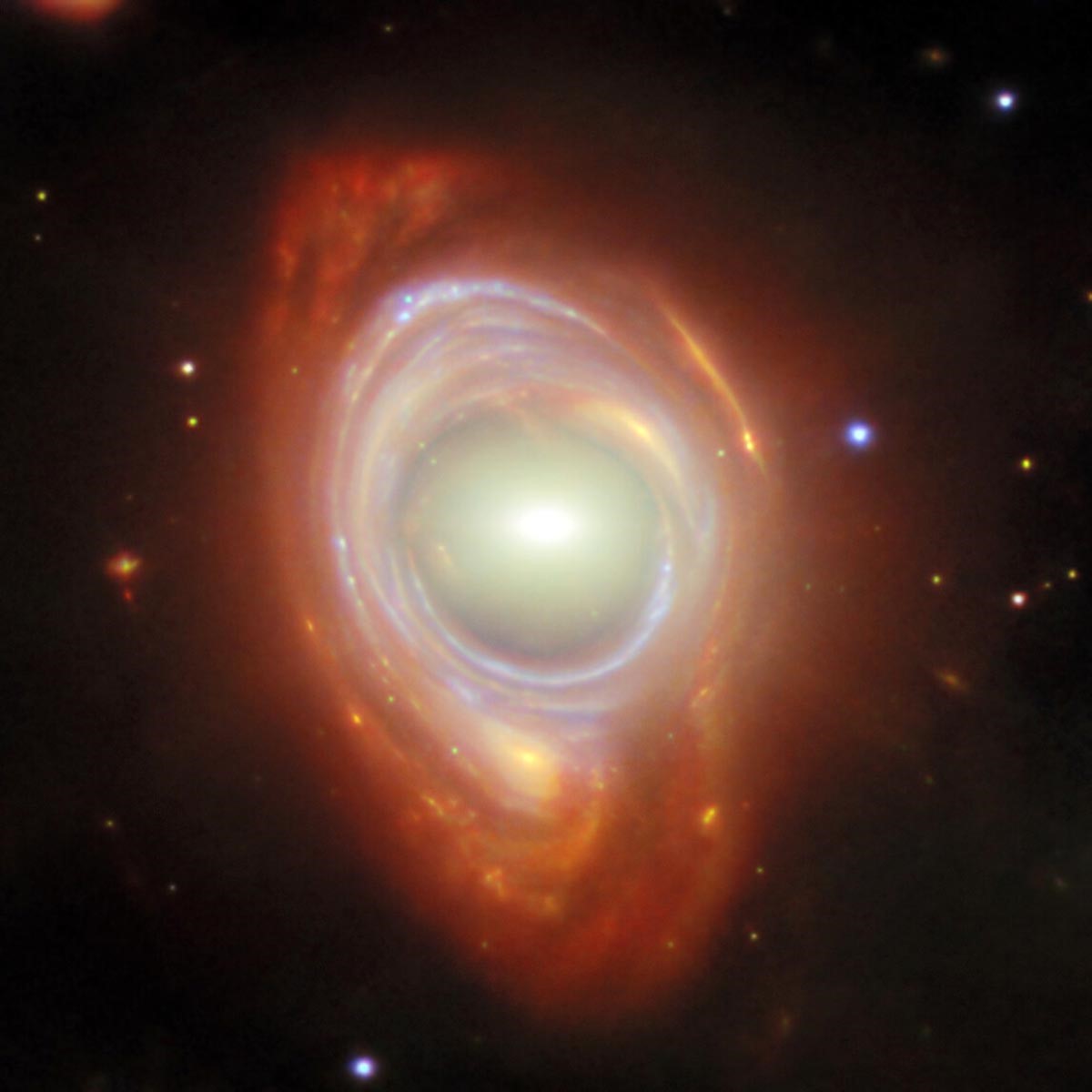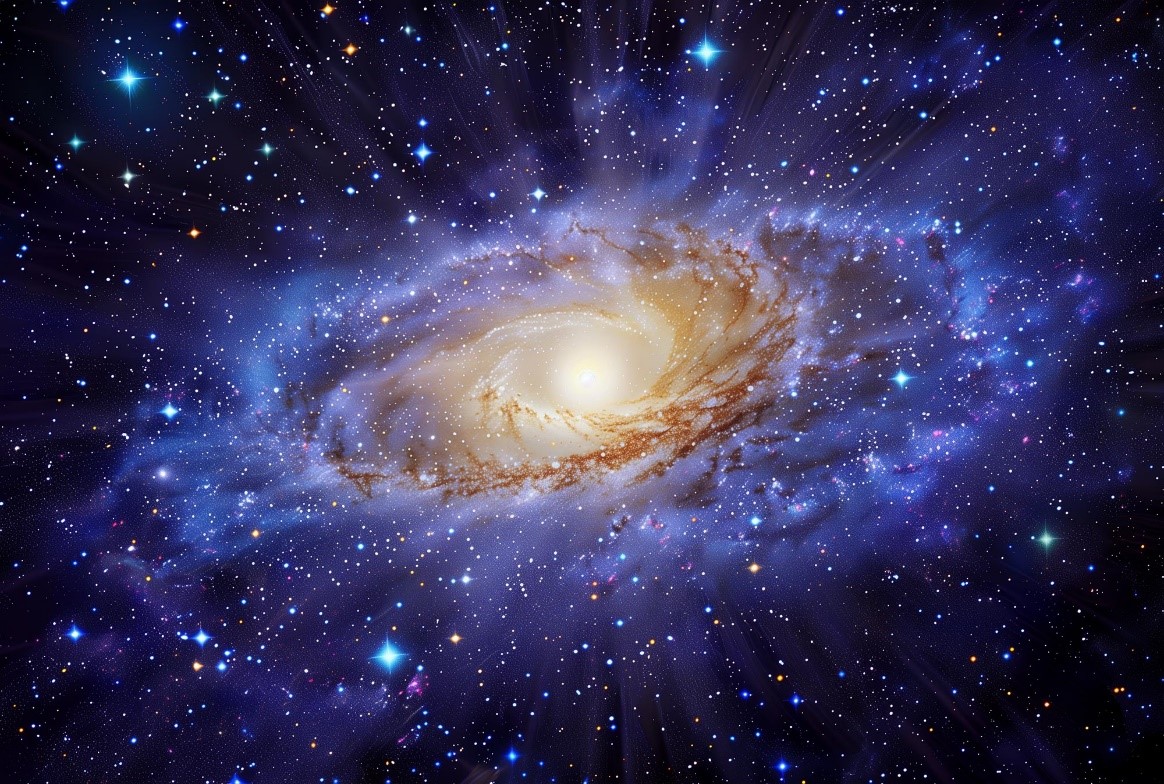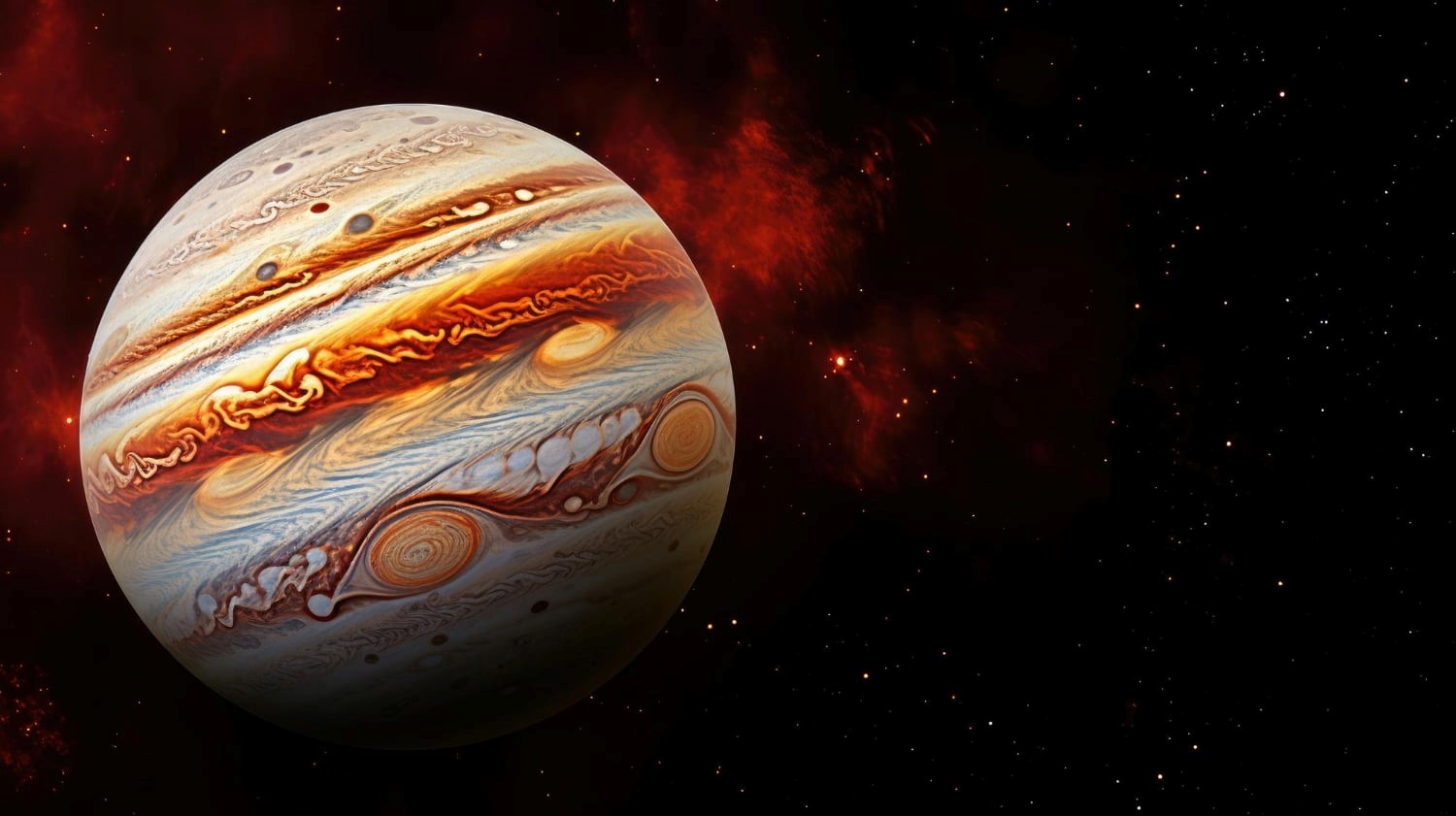Webb Telescope Uncovers Hidden Galaxy Behind "Cosmic Tornado"
Webb’s detailed observations capture a rare, random alignment of a protostellar outflow and a distant spiral galaxy. Since we view the universe in two dimensions, objects that seem close together in images may actually be separated by immense distances with no real connection.
NASA’s James Webb Space Telescope recently captured a striking alignment of the protostellar outflow Herbig-Haro 49/50 with a distant spiral galaxy. This new infrared composite image provides a highly detailed view of the young star’s outflow due to its proximity to Earth. Webb’s sharp resolution allows scientists to examine the jet’s fine structure and better understand how these energetic outflows shape their surroundings during early star formation.
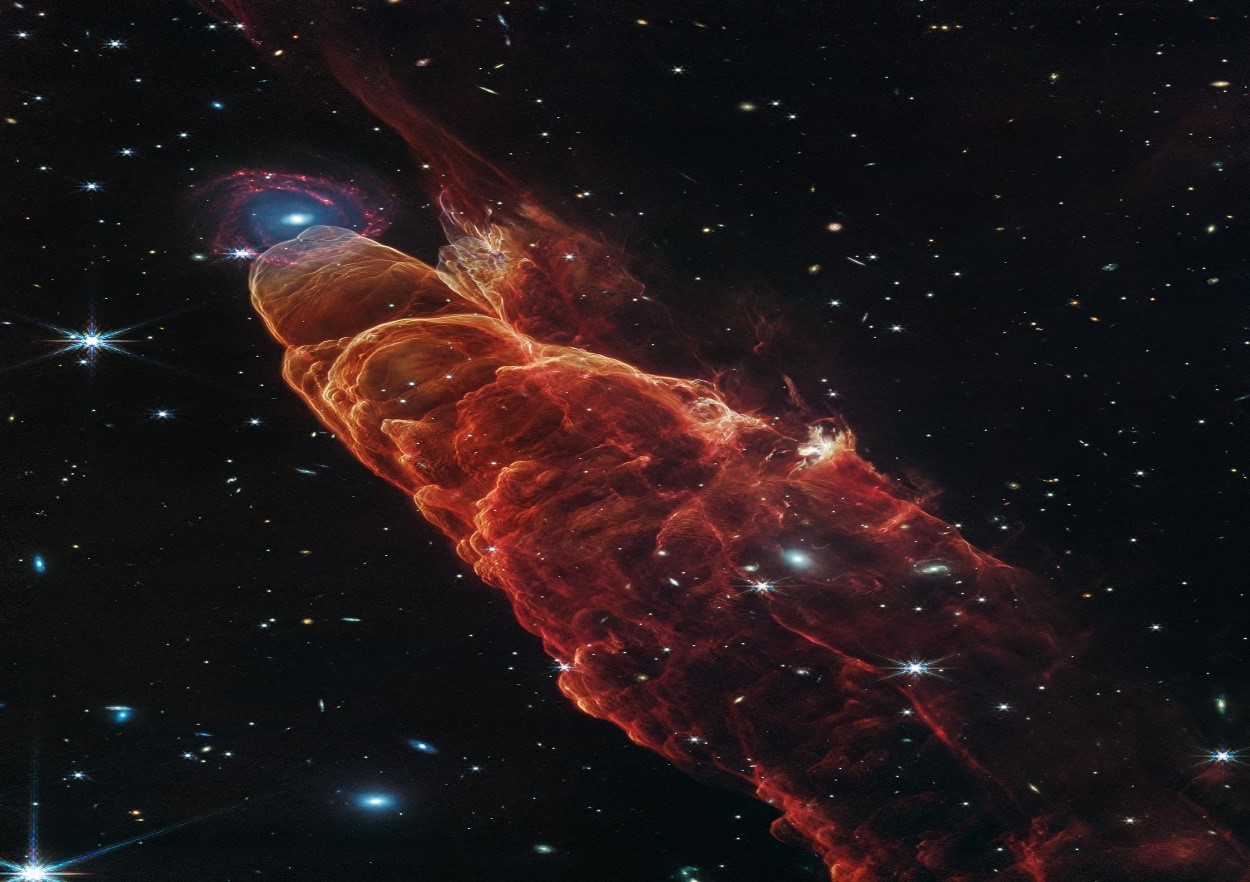
Figure 1. Webb Captures Stellar Outflow and Distant Spiral Galaxy
Webb Space Telescope Reveals the True Nature of the Cosmic Tornado
Looking for a visual treat? This stunning image delivers just that. It captures a rare alignment of Herbig-Haro 49/50, a frothy outflow from a nearby young star, with a distant, colorful spiral galaxy. Taken by NASA’s James Webb Space Telescope, the composite image merges data from its Near-Infrared Camera (NIRCam) and Mid-Infrared Instrument (MIRI), revealing intricate details of this dynamic region. Figure 1 shows Webb Captures Stellar Outflow and Distant Spiral Galaxy.
Herbig-Haro objects are glowing gas clouds formed when high-speed jets from a developing star collide with surrounding material [1]. These jets can stretch for light-years, creating shock waves that heat the gas. As it cools, the gas emits light across visible and infrared wavelengths, making these objects perfect for study with Webb’s infrared capabilities.
From "Cosmic Tornado" to Unexpected Galaxy
In 2006, NASA’s Spitzer Space Telescope captured this region, naming HH 49/50 the “Cosmic Tornado” due to its twisted shape. However, the bright, fuzzy feature at its tip remained a mystery. Now, with Webb’s superior resolution, astronomers can examine the shocked gas in detail, confirm that the fuzzy object is a distant spiral galaxy, and reveal a background teeming with faraway galaxies.
HH 49/50 resides in the Chamaeleon I Cloud complex, a nearby star-forming region in the Milky Way that produces numerous low-mass stars similar to the Sun. This environment likely resembles the one in which our Sun formed. Previous observations indicate that the HH 49/50 outflow is moving away at speeds of 60–190 miles per second (100–300 kilometers per second) and is part of a larger outflow structure.
This visualization explores the three-dimensional structure of Herbig-Haro 49/50 (HH 49/50) as observed in near- and mid-infrared light by the James Webb Space Telescope.
Webb’s Instruments Unveil Breathtaking Detail
Webb’s NIRCam and MIRI observations of HH 49/50 reveal glowing hydrogen and carbon monoxide molecules, along with energized dust grains, shown in orange and red. As the protostellar jet collides with the region, these details help astronomers model the jet’s properties and its impact on surrounding material.
The arc-shaped structures in HH 49/50, resembling a boat’s wake, trace back to the likely source of the outflow. Scientists suspect the protostar Cederblad 110 IRS4, located about 1.5 light-years away, as the driving force behind the jet. A Class I protostar, CED 110 IRS4 is in its early growth phase, still accumulating mass from its surrounding disk. Using Webb’s NIRCam and MIRI, researchers recently analyzed this protostar’s icy environment, gaining new insights into its composition.
A Mysterious Outcrop and Unusual Jet Behaviour
Webb’s detailed images of the arcs in HH 49/50 help refine the jet’s origin, but not all arcs align in the same direction. Notably, an unusual outcrop at the top right of the main outflow may be another superimposed outflow linked to the slow precession of the intermittent jet source. Alternatively, it could result from the main outflow breaking apart.
The Spiral Galaxy in the Background
The galaxy that coincidentally appears at the tip of HH 49/50 is a distant, face-on spiral galaxy. Its bright central bulge, shown in blue, marks the presence of older stars and hints at a barred structure. The reddish clumps along its spiral arms indicate regions of warm dust and active star formation [2]. Additionally, the galaxy features evacuated bubbles in these dusty areas, resembling those seen in nearby galaxies studied by Webb’s PHANGS program.
A Fortuitous Cosmic Alignment
Webb has captured a rare alignment of two unrelated celestial objects. Over time, the edge of HH 49/50 will expand, eventually obscuring the distant galaxy.
Located about 625 light-years away in the constellation Chamaeleon, Herbig-Haro 49/50 is a striking example of stellar outflows in action.
The James Webb Space Telescope, a global collaboration between NASA, ESA, and CSA, is revolutionizing space science by probing the origins of galaxies, stars, and potentially life itself.
Reference:
- https://scitechdaily.com/webb-telescope-reveals-hidden-galaxy-behind-cosmic-tornado/
- https://www.space.com/space-exploration/james-webb-space-telescope/cosmic-tornado-swirls-in-breathtaking-new-james-webb-space-telescope-image
Cite this article:
Janani R (2025), Webb Telescope Uncovers Hidden Galaxy Behind "Cosmic Tornado", AnaTechMaz, pp.289


